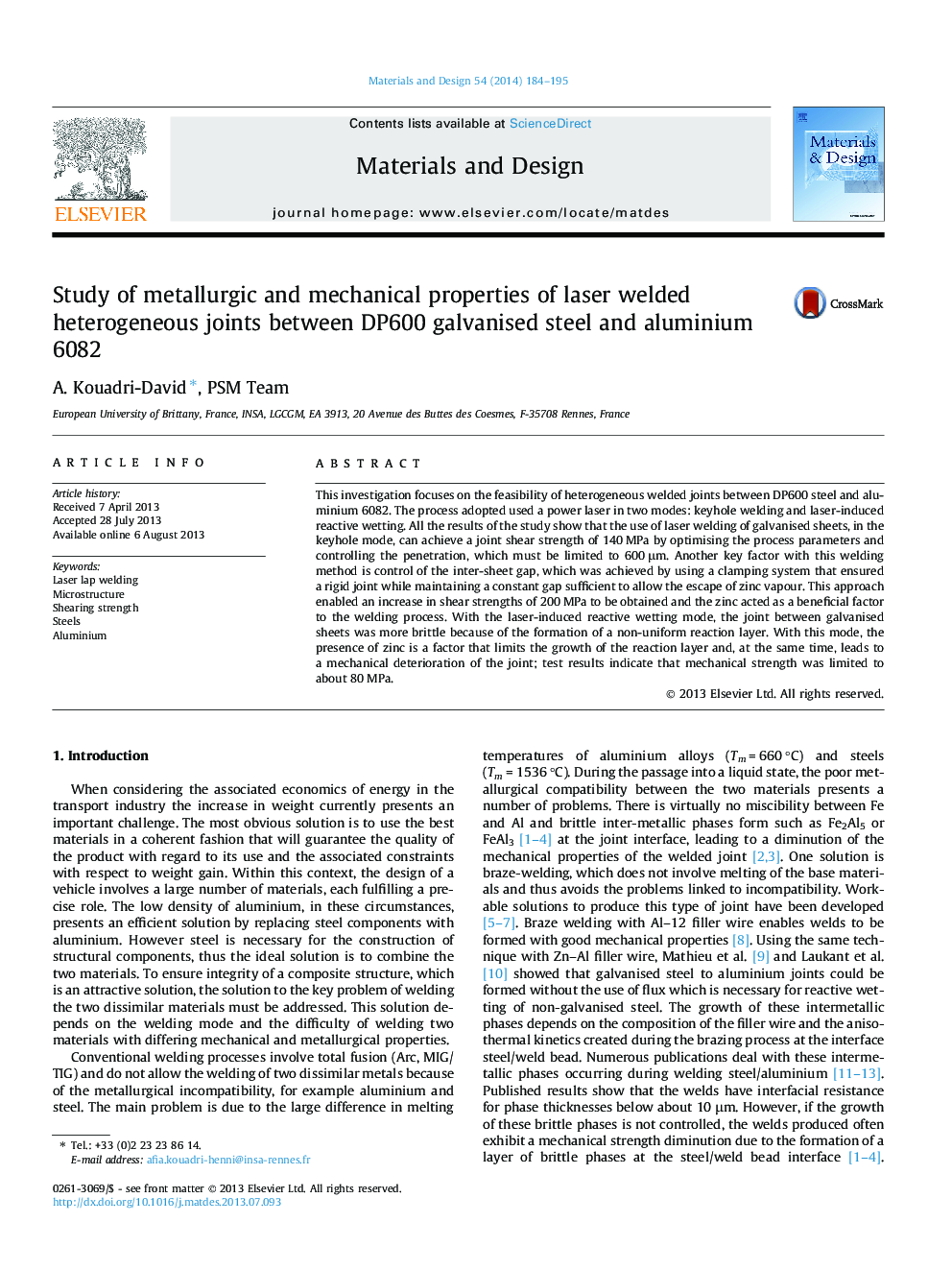| Article ID | Journal | Published Year | Pages | File Type |
|---|---|---|---|---|
| 829628 | Materials & Design (1980-2015) | 2014 | 12 Pages |
•Laser welding in the vapor capillary mode of galvanized steel and aluminum sheets.•The zinc has been used such as a factor that is conducive to bonding provided.•The inter-sheet gap is controlled by the use of a purpose designed clamping system.•This one ensures a good union of the sheets and allows the escape of zinc vapour.•The penetration depth of the weld bead is the key to optimize the shear strength.
This investigation focuses on the feasibility of heterogeneous welded joints between DP600 steel and aluminium 6082. The process adopted used a power laser in two modes: keyhole welding and laser-induced reactive wetting. All the results of the study show that the use of laser welding of galvanised sheets, in the keyhole mode, can achieve a joint shear strength of 140 MPa by optimising the process parameters and controlling the penetration, which must be limited to 600 μm. Another key factor with this welding method is control of the inter-sheet gap, which was achieved by using a clamping system that ensured a rigid joint while maintaining a constant gap sufficient to allow the escape of zinc vapour. This approach enabled an increase in shear strengths of 200 MPa to be obtained and the zinc acted as a beneficial factor to the welding process. With the laser-induced reactive wetting mode, the joint between galvanised sheets was more brittle because of the formation of a non-uniform reaction layer. With this mode, the presence of zinc is a factor that limits the growth of the reaction layer and, at the same time, leads to a mechanical deterioration of the joint; test results indicate that mechanical strength was limited to about 80 MPa.
